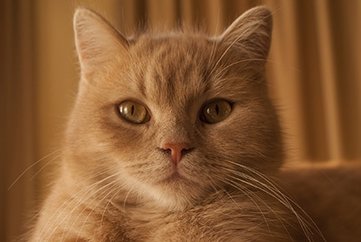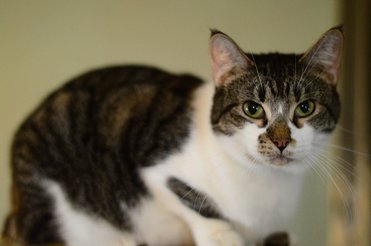
All too familiar with frisky felines waking you at 4 AM?
Whether it’s to play, snack or cuddle, what’s endearingly amusing during the day is emphatically annoying at night.
But then, cats’ internal clocks aren’t humans’ internal clocks, and being nocturnal by nature (they’re most active from middle/late evening until the early hours of the morning), nighttime activities come naturally to them. Given their kitty druthers, they would sleep all day, rise between 8 and 9 PM, stretch, scratch and use the litter box, then spend the rest of the night pussycat prowling and “paw-tying.”
Because people are diurnal (we’re typically awake during the day and asleep at night), the only way for sleep deprived cat guardians to reclaim their much needed zzz’s is by resetting their prodding pets’ inner clocks through a dedicated program of retraining.
Begin by scheduling playtime during the day and early evening. Interactive toys are the most effective because they satisfy a cat’s hunting skills by allowing her to do what she would do in the wild: stalk, chase and finally capture.
After playing with your cat, feed her a high-protein meal – again to simulate what would happen in the wild: hunting down, killing and eating her prey.
Discourage all dozing off, especially in the early evening.
If paws-ible, adopt a kitty to keep yours company. Cats left alone during the day are more inclined to cat nap those daylight hours away. But add a second friendly feline to the mix and let the fun begin!
Since retraining takes time (the precise amount of time depends on each cat and cat guardian), not only are patience and persistence required, but more importantly, resisting the temptation to “cheat.”
The most common one is giving in to the temptation to “buy off” your cavorting and oh-so-clever kitty by playing with or feeding her when she prods you awake. This both rewards and reinforces her behavior and encourages her to persist.
And while frustration can sometimes lead to physical punishment – from spraying your cat with water to actually striking her – resist this temptation as well. Not only is it cruel, but it will only instill fear in her.
If, however, kitty’s nighttime nuisancing continues, you may have to consider literally giving the persistent puss her own space. From a spare room to the laundry room, complete with her own, comfy cozy cat bed, favorite toys, and filled food and water bowls.













 RSS Feed
RSS Feed